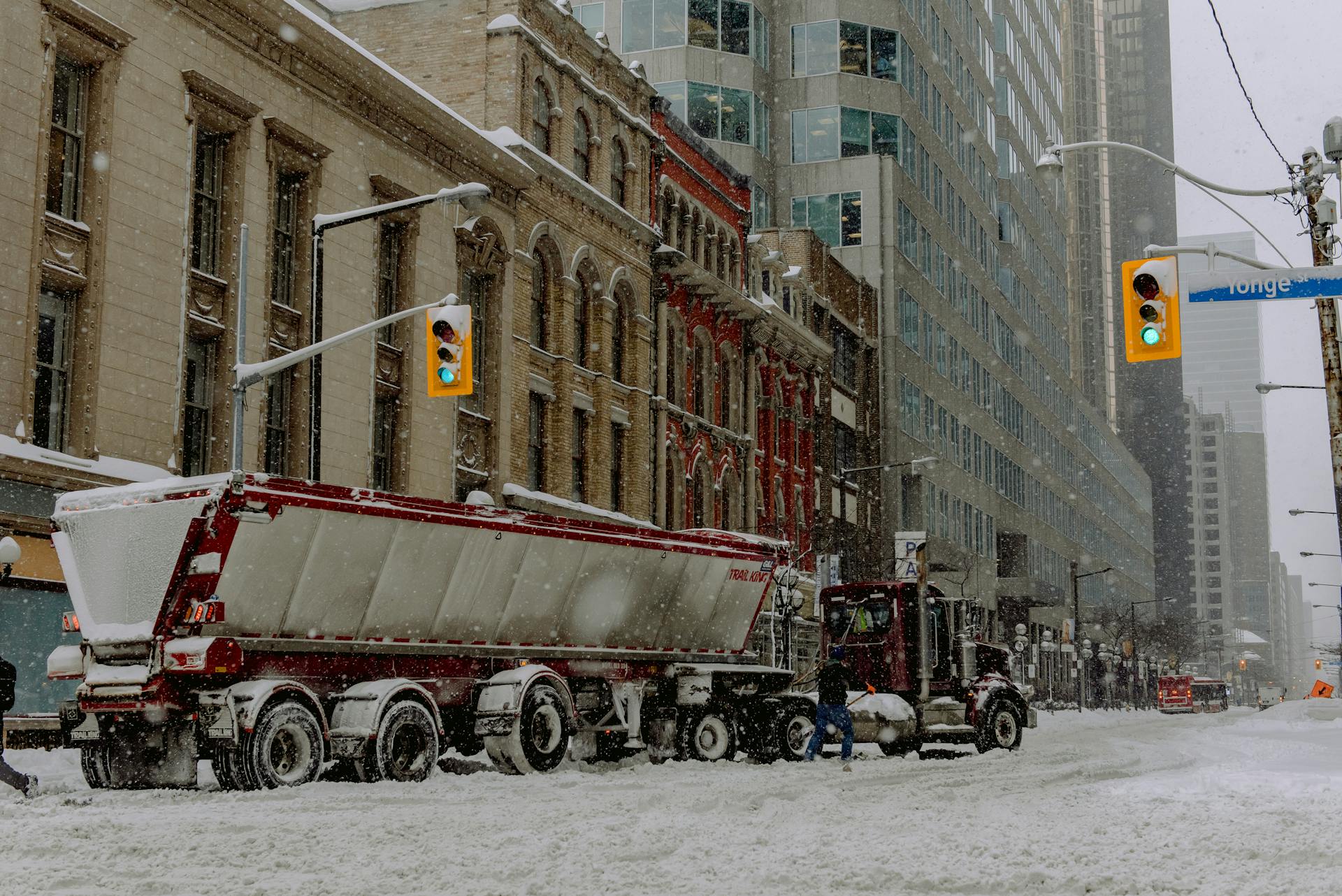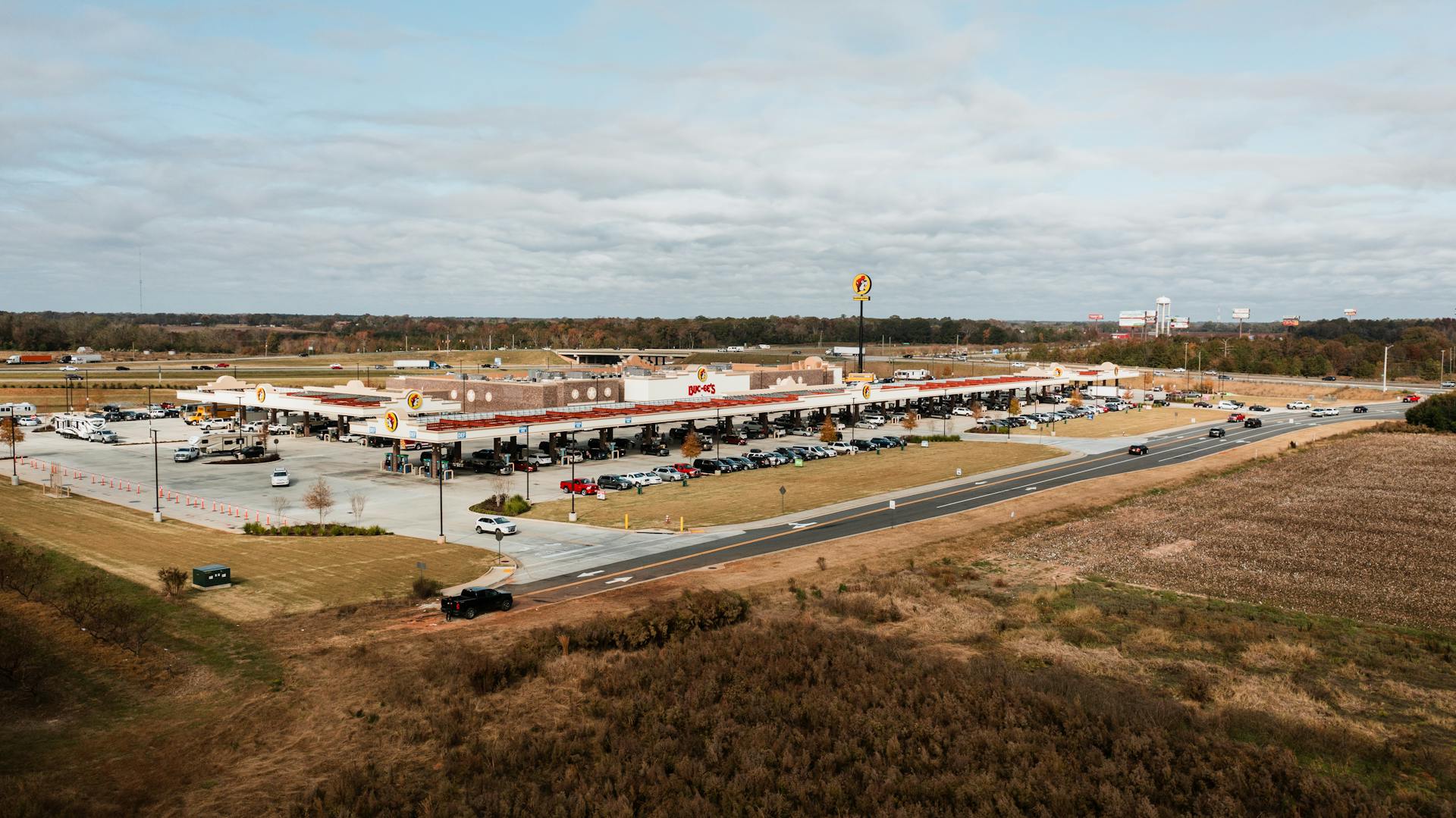
Semi trucks are generally not allowed to drive on residential streets, as they are typically restricted to designated truck routes and highways.
The Federal Highway Administration (FHWA) regulates the use of highways by commercial vehicles, including semi trucks.
However, some cities and states have their own rules and regulations regarding semi truck access to residential streets.
In some areas, semi trucks are allowed to drive on residential streets with a permit, but this is not common.
Laws and Regulations
Semi-trucks are regulated by both federal and local governments to ensure public safety. The Federal Motor Carrier Safety Administration (FMCSA) sets the rules for weight limits, driving hour regulations, and securing cargo.
In Missouri, driver guides are available to commercial truck drivers and trucking companies to stay in compliance with state and local regulations. These guidelines protect public safety, follow noise ordinances, and prevent damage to roadways.
Local municipalities often regulate semi-truck access to residential streets, with restrictions including weight limits, time restrictions, and designated truck routes. Some cities may also require permits for semi-trucks to operate on certain residential streets.
Here are some common restrictions you may encounter:
- Weight Limits: Local governments set weight limits for vehicles on residential streets.
- Time Restrictions: Some cities impose time restrictions on when a semi can operate in a residential area.
- Designated Truck Routes: Many municipalities establish designated truck routes to guide semi-trucks away from residential streets.
- Signage and Permits: Local governments often use signage to indicate restricted areas, and truck drivers may need permits to operate on certain residential streets.
Laws Governing
The Federal Motor Carrier Safety Administration (FMCSA) regulates critical aspects of trucking, such as weight limits, driving hour regulations, and truck maintenance.
The FMCSA sets dimensions and limits for semi-trucks, including a maximum length of 65 feet, a maximum width of 8.5 feet, and a maximum weight of 80,000 pounds.
Local governments also set limits on the dimensions of semi-trucks allowed in their jurisdictions, restricting access to bridges, city streets, country roads, overpasses, and residential streets.
Local municipalities may place restrictions on truck traffic to protect residential neighborhoods from noise, air pollution, and damage to the roads caused by heavy vehicles.
Here are some common restrictions:
- Weight limits: Local governments set weight limits for vehicles on residential streets, and semi-trucks often exceed these limits unless they have a special permit or are performing specific tasks.
- Time restrictions: Some cities impose time restrictions on when a semi can operate in a residential area, such as only during daylight hours or during peak traffic times.
- Designated truck routes: Many municipalities establish designated truck routes to guide semi-trucks away from residential streets.
- Signage and permits: Local governments often use signage to indicate restricted areas, and truck drivers may need permits to operate on certain residential streets.
Local law enforcement and transportation agencies are responsible for ensuring compliance with truck restrictions, and police may issue fines to truck drivers who violate ordinances.
International Trade Drives Truck Traffic
International trade has a significant impact on truck traffic in neighborhoods. The North American Free Trade Agreement (NAFTA) negotiated in 1992 by President George H.W. Bush and signed into law in 1993 by President Bill Clinton is a major contributor to this issue.

Increased international trade led to a surge in truck traffic, with many trucks now driving on neighborhood streets. This is due to the absence of designated truck routes, a problem that arose from the increased trade volume without a corresponding increase in border capacity.
The passing of NAFTA has had a terrible impact on communities like Southwest Detroit, where residents like Zuniga remember a time before the invasion of semi-trucks. The influx of trucks has made her "so angry" due to the disruption it causes in her neighborhood.
The huge influx of trucks can be attributed to international trade, with many trucks coming from domestic intermodal rail yards and logistical centers. However, the majority of the trucks are still a result of the increased international trade facilitated by NAFTA.
Semi-Truck Access on Residential Streets
Semi-truck access on residential streets can be a bit tricky. Regulations vary from state to state and within different municipalities.
Some residential areas allow 18-wheeler trucks to drive on community streets, but local ordinances may restrict them from driving on specific streets, especially narrow ones.
Local municipalities may place restrictions on the size of trucks on certain streets, particularly those with bridges and low underpasses.
Large trucks are generally allowed on residential streets unless otherwise posted, due to the necessity for deliveries to local businesses, hospitals, schools, and other entities.
Noise restrictions often prohibit large trucks from driving on residential streets within specific hours, usually between 10:00 PM and 6:00 AM.
Semi-trucks are not explicitly prohibited from driving on residential streets in Missouri, but access is often regulated by local ordinances.
Here are some common restrictions on semi-truck traffic in Missouri:
- Weight Limits: Local governments set weight limits for vehicles on residential streets, and semi-trucks often exceed these limits unless they have a special permit or are performing specific tasks.
- Time Restrictions: Some cities impose time restrictions on when a semi can operate in a residential area, such as only during daylight hours or peak traffic times.
- Designated Truck Routes: Many municipalities establish designated truck routes to guide semi-trucks away from residential streets.
- Signage and Permits: Local governments often use signage to indicate restricted areas, and truck drivers may need permits to operate on certain residential streets.
Big rig trucks on residential streets can create a host of problems, from noise disturbances to automobile accidents.
Challenges and Impacts
Driving a semi-truck on residential streets can be a challenge, especially in areas with narrow roads and limited visibility. Semi-trucks can be up to 53 feet long, making it difficult to navigate tight spaces.
In some areas, semi-trucks are not allowed on residential streets due to safety concerns. According to local regulations, semi-trucks are prohibited from driving on certain streets to prevent accidents and minimize disruptions to residents.
Semi-trucks can cause significant damage to residential streets, including potholes and cracked pavement. In one instance, a semi-truck damaged a residential street, requiring costly repairs.
The impact of semi-trucks on residential streets is not just financial, but also environmental. Semi-trucks can emit high levels of pollutants, contributing to air pollution in residential areas.
Residents who live near busy roads are often exposed to high levels of noise pollution from semi-trucks. The constant rumble of engines and screeching of brakes can be a nuisance for those who live nearby.
Commercial Truck Parking
Commercial trucks are allowed to park on residential streets, but there are some exceptions to be aware of. In some areas, trucks must be under a certain size to be eligible to park in residential areas.
Parking restrictions also apply, with semi-trucks often not permitted to park on residential streets after 10 p.m. and before 6 a.m. This means you might need to plan ahead and find alternative parking for your truck during these hours.
Residential Street Parking for Semi-Trucks
Semi-trucks can park on residential streets, but there are some exceptions to be aware of.
Notably, they're often not permitted to park on residential streets after 10 p.m. and before 6 a.m.
In certain areas, trucks must be under a certain size to be eligible to park in residential areas.
If you're planning to park a semi-truck on a residential street, make sure to check the local regulations first.
Commercial Truck Parking on Residential Streets
Most residential areas restrict 18-wheelers and other large commercial trucks from parking on community streets during specific hours. Usually, this is between 10:00 PM and 6:00 AM.
Idling trucks create noise disturbances in the evening hours and restrict visibility for drivers navigating residential streets at night. Parked trucks also significantly narrow roadways, making accidents more likely to occur.
In some areas, semi-trucks are not explicitly prohibited from driving on residential streets, but access is often regulated by local ordinances. Many municipalities place restrictions on truck traffic to protect residential neighborhoods from noise, air pollution, and damage to the roads caused by heavy vehicles.
Common restrictions include weight limits, time restrictions, designated truck routes, and signage and permits. Local governments set weight limits for vehicles on residential streets, and semi-trucks often exceed these limits unless they have a special permit or are performing specific tasks, such as local deliveries.
Some cities impose time restrictions on when a semi can operate in a residential area. For example, trucks may only be permitted to drive down residential roads during daylight hours, or they may be prohibited during peak traffic times.
Designated truck routes are often established to guide semi-trucks away from residential streets. Drivers are required to follow these routes unless delivering goods to a specific address in a restricted area.
Local governments often use signage to indicate restricted areas. Truck drivers may need permits to operate on certain residential streets, particularly if their vehicles exceed posted weight or size limits.
Here's a summary of common restrictions:
- Weight Limits: Local governments set weight limits for vehicles on residential streets.
- Time Restrictions: Some cities impose time restrictions on when a semi can operate in a residential area.
- Designated Truck Routes: Many municipalities establish designated truck routes to guide semi-trucks away from residential streets.
- Signage and Permits: Local governments often use signage to indicate restricted areas and may require permits for truck drivers to operate on certain residential streets.
Sources
- https://www.millerandhinelaw.com/blog/2024/12/are-18-wheelers-allowed-to-drive-on-residential-streets/
- https://www.northlandinjurylaw.com/blog/are-semi-trucks-allowed-to-drive-on-residential-streets-in-missouri/
- https://www.usedvending.com/blog/semi-trucks-residential-streets/
- https://www.claydugas.com/blog/2018/may/how-certain-types-of-roadways-can-be-an-unsafe-f/
- https://outliermedia.org/southwest-detroit-truck-traffic-routes-ordinance/
Featured Images: pexels.com

